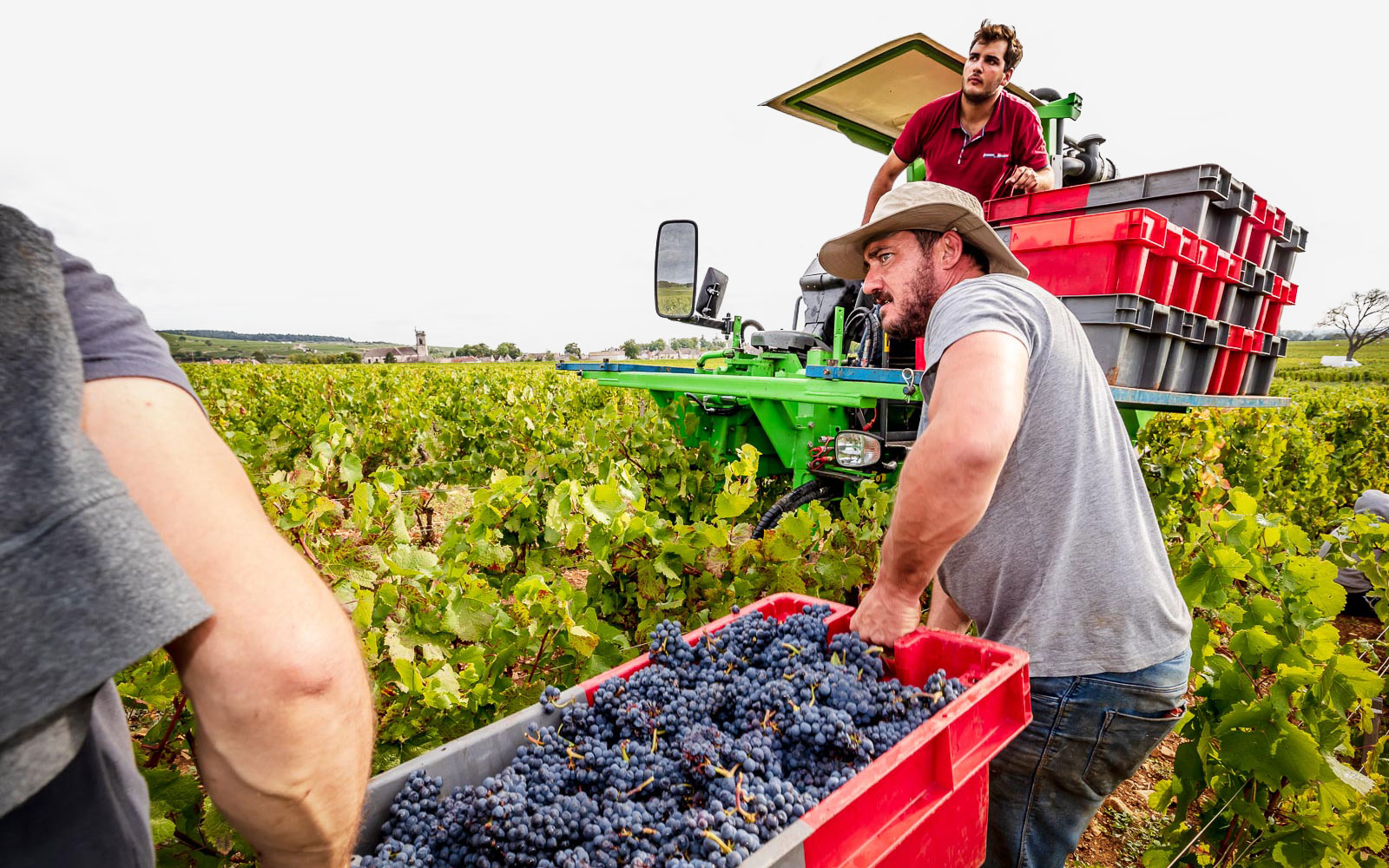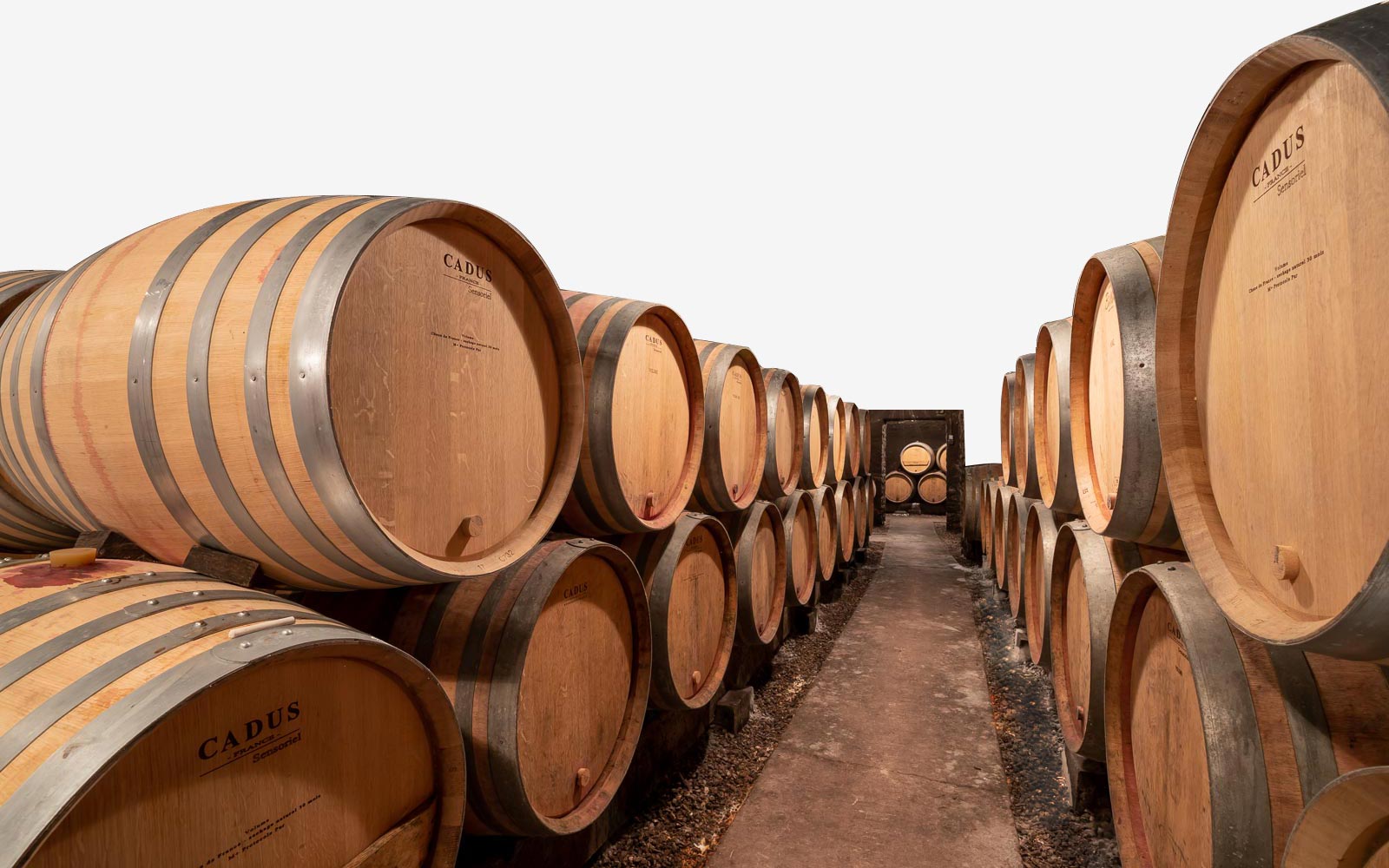‘It’s time for us to adapt to nature and stop expecting nature to provide us with what we want. To do that, we have to respect the soil, the plants and life itself, and find a better state of equilibrium.’
Protecting nature means safeguarding our heritage and our terroirs.
This is why the majority of the work at the estate takes place in the vineyard.
We believe in less intervention, we take our cue from our vines and respect their natural life cycle, above all.
We have adopted a reasoned approach, adding organic matter, for example, and managing the ploughing to preserve the richness of the living soil.
The goal:
To grow vigorous plants and harvest fruit with perfect phenolic ripeness.
Vinification can then be managed without much intervention. Extraction is slower and gentler than before, and vatting lasts longer. The human touch is there to monitor, control and adjust, while keeping a respectful distance to avoid distorting the character of the terroir – it should be allowed to express itself.
Everything concerning the soil, the vinification and the maturation is a question of subtle balance and adaptation. The art of growing vines today is knowing when to be hands-on and when to be hands-off. A stance that requires a lot of monitoring and the capacity to react and remain open to reassessing any situation.
This is the price we pay for allowing that freedom of expression. And the result is that each of the wines, as it arrives in our glasses, plays the hymn of the land, the melody of its specific plot.

Vinification
‘Everything is done to preserve the pulp and aromatic purity of the fruit in order to obtain fleshy, round, gourmet wines that are a combination of an explosion of flavours, finesse and elegance – wines that stir the emotions.’ Didier Delagrange
When the skin, juice and seeds have reached perfect phenolic ripeness, the grapes are picked. The harvest is hand-picked and sorted in the vineyard, then it is transported in boxes and undergoes more rigorous selection on the sorting table.
The fruit is therefore of great purity – the grapes may be destemmed or not, depending both on the vintage and on the discrimination of Didier and Alexis – and is placed in vats using gravity in order to preserve the berries. Whatever the vintage, the proportion of whole bunches never exceeds 30 to 40%.
Cold maceration – the duration of which is extremely variable and depends on the plots and the vintages – is followed by alcoholic fermentation using indigenous yeast only. The amount of pumping over and punching down is specific to each cuvée.
The temperatures are monitored and controlled, and the juices tasted regularly, to manage the ideal extraction which is gentle. This is when the date of harvest proves of such importance because only optimum phenolic ripeness makes it possible to ferment for longer periods, and to extract aromas slowly, while still obtaining silky tannins. The vats are sealed, and the fermentation temperatures kept high enough to allow the grapes to infuse. The length of maceration time is not subject to any rules. It is the palates of those who make the wine and taste it daily that judge the opportune moment for racking.
The marc is then gently pressed in order to extract the good tannins only.
After settling, to eliminate the gross lees, the wine is put into barrels and matured in naturally cold cellars, continuing to undergo malolactic fermentation until August of the following year. This long and gentle process ensures the well-being of the wine, allowing it to attain maximal quality.
During the 12 months of maturation, only 20% new barrels are used, then the whole cuvée is returned to stainless steel vats for another six months.
This choice makes it possible to produce wines that combine the elegance of Pinot Noir with freshness, sustained complexity and natural aromas, while respecting the identity of each terroir
The grapes are selected in the vineyard and harvested by hand to retain only the best of the fruit.
Pressing is slow and gentle in order to extract the best of the juice.
Once the deposit has been removed and the wine placed in vats, alcoholic fermentation occurs naturally in the cellar at a temperature ideal for ensuring the proper preservation of the aromas and freshness of the wine.
Depending on the appellation and the vintage, the whites are matured for 12 months in barrels or in vats and tasted regularly in order to control their development.

